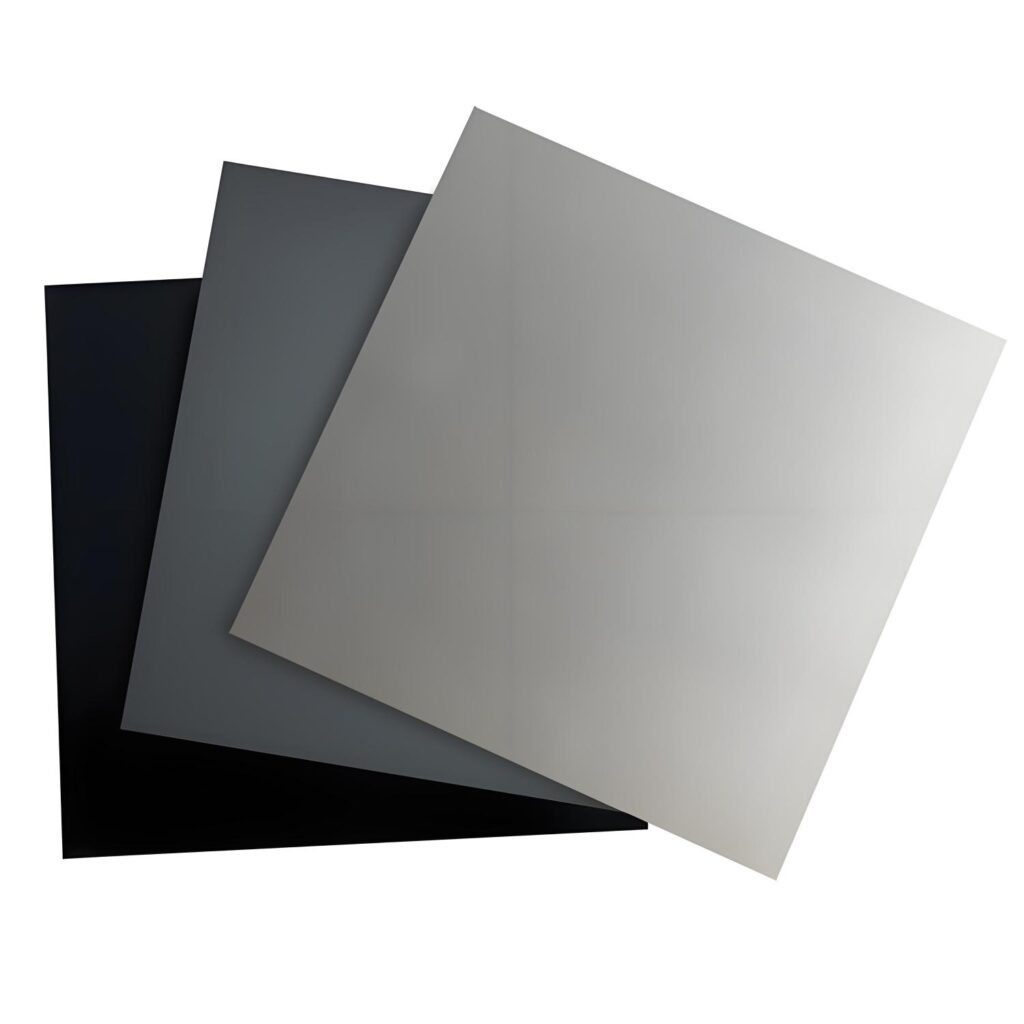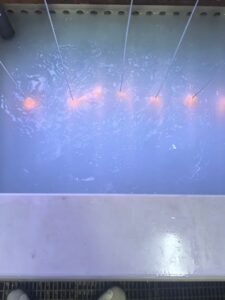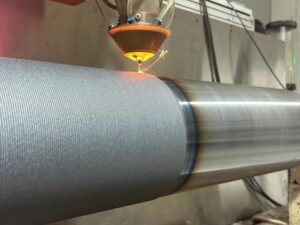What Is 5052 Aluminum?
5052 aluminum is a non-heat-treatable alloy from the 5xxx series, primarily alloyed with magnesium and chromium. Known for its excellent corrosion resistance, especially in marine environments, 5052 aluminum is widely used in industries requiring durable, lightweight materials. Its ability to withstand harsh conditions without sacrificing formability makes it a favorite for applications like marine components, automotive parts, and architectural elements.
The alloy’s designation, “5052,” indicates its specific composition within the 5xxx series, where magnesium is the primary alloying element. This gives 5052 aluminum its characteristic balance of strength and flexibility, making it suitable for both structural and aesthetic purposes. Its versatility extends to welding and fabrication, allowing manufacturers to create complex shapes without compromising the material’s integrity.
Chemical Composition of Aluminum Alloy 5052
- Aluminum (Al): 95.7–97.7% (base material)
- Magnesium (Mg): 2.2–2.8% (enhances strength and corrosion resistance)
- Chromium (Cr): 0.15–0.35% (improves corrosion resistance)
- Iron (Fe): ≤ 0.4% (minimizes impurities)
- Silicon (Si): ≤ 0.25% (controls grain structure)
- Copper (Cu): ≤ 0.1% (limits corrosion susceptibility)
- Manganese (Mn): ≤ 0.1% (aids in strength)
- Zinc (Zn): ≤ 0.1% (minor alloying element)
- Other Elements: ≤ 0.15% (trace elements)
The high aluminum content ensures the alloy remains lightweight, while magnesium and chromium contribute to its strength and resistance to corrosion, particularly in saltwater environments. This composition makes 5052 aluminum ideal for applications where durability and weight are critical factors.
Properties of 5052 Aluminum
Mechanical Properties
The mechanical properties of 5052 aluminum define its strength, ductility, and ability to withstand stress. These properties vary depending on the temper of the alloy (e.g., H32, H34), which refers to the heat treatment and work-hardening processes applied. Common mechanical properties for 5052-H32 (a popular temper) include:
- Tensile Strength: 210–260 MPa (30–38 ksi)
- Yield Strength: 130 MPa (19 ksi)
- Elongation: 12–20% (indicating good ductility)
- Hardness: Approximately 60 Brinell
- Fatigue Strength: High, making it suitable for cyclic loading applications
These properties make this aluminum alloy strong enough for structural applications while remaining flexible enough for forming processes like bending and stamping. Its fatigue resistance is particularly valuable in industries like aerospace and automotive, where components endure repeated stress.
Physical Properties
Beyond its mechanical strengths, 5052 aluminum boasts physical properties that enhance its appeal:
- Density: 2.68 g/cm³ (lightweight, comparable to other aluminum alloys)
- Melting Point: Approximately 607–649°C (1125–1200°F)
- Thermal Conductivity: 138 W/m·K (efficient heat dissipation)
- Electrical Conductivity: 33% IACS (International Annealed Copper Standard)
- Corrosion Resistance: Excellent, especially in marine and chemical environments
- Surface Finish: Smooth, ideal for anodizing and aesthetic applications
The alloy’s low density contributes to its lightweight nature, making it a top choice for applications where weight reduction is critical, such as in transportation. Its thermal and electrical conductivity also makes it suitable for heat exchangers and electrical enclosures.
What Is 5052 Aluminum Used For?

The versatility of 5052 aluminum makes it a staple in numerous industries. Its corrosion resistance, formability, and strength allow it to excel in applications ranging from marine components to consumer goods. Here are some common uses:
- Marine Industry: 5052 aluminum is widely used for boat hulls, deckhouses, and other marine components due to its excellent resistance to saltwater corrosion. Its lightweight nature also improves fuel efficiency in vessels.
- Automotive Industry: The alloy is used in fuel tanks, truck bodies, and panels, where its strength and formability are critical. Its ability to withstand road salts and environmental exposure makes it ideal for exterior components.
- Aerospace: While not as strong as some 7xxx series alloys, 5052 aluminum is used in aircraft components like fuel lines and panels, where corrosion resistance and weight savings are essential.
- Architecture and Construction: The alloy’s aesthetic appeal and durability make it a popular choice for roofing, siding, and decorative elements. Its ability to be anodized enhances its visual appeal.
- Consumer Goods: From kitchen appliances to electronic enclosures, 5052 aluminum’s smooth surface and corrosion resistance make it ideal for products requiring both functionality and aesthetics.
- Pressure Vessels and Tanks: Its weldability and strength make it suitable for manufacturing pressure vessels, hydraulic tubes, and storage tanks.
These applications highlight the alloy’s ability to balance performance and practicality, making it a go-to material for engineers and manufacturers worldwide.
Processing and Fabrication Techniques
5052 aluminum’s excellent workability makes it compatible with a variety of processing and fabrication techniques. Manufacturers can shape, join, and finish the alloy to meet specific project requirements. Common techniques include:
- Forming: The alloy’s high ductility allows it to be bent, stamped, or drawn into complex shapes without cracking. This is particularly useful for creating curved panels or intricate components.
- Welding: 5052 aluminum is highly weldable using techniques like TIG (Tungsten Inert Gas) and MIG (Metal Inert Gas) welding. Its magnesium content ensures strong welds with minimal porosity.
- Machining: The alloy can be machined using standard tools, though care must be taken to avoid excessive heat buildup, which can affect surface finish. Precionn, with its expertise in machining, ensures precise cuts and finishes when working with 5052 aluminum.
- Anodizing: The alloy responds well to anodizing, which enhances its corrosion resistance and allows for decorative finishes. This is ideal for architectural and consumer applications.
- Cutting: Laser cutting, waterjet cutting, and shearing are all effective for shaping 5052 aluminum, offering clean edges and minimal material waste.
These techniques make 5052 aluminum a favorite among fabricators, as it allows for flexibility in design and production while maintaining high-quality results.
5052 vs 6061 Aluminum
When choosing an aluminum alloy, comparisons between 5052 and 6061 aluminum are common, as both are widely used but serve different purposes. Here’s a breakdown of their differences:
- Composition: 5052-H32 is alloyed with magnesium and chromium, while 6061 contains magnesium and silicon. This makes 6061 heat-treatable, unlike 5052.
- Strength: 6061 aluminum (T6 temper) has higher tensile strength (310 MPa vs. 210–260 MPa for 5052-H32), making it better for structural applications requiring high strength.
- Corrosion Resistance: 5052-H32 outperforms 6061 in corrosion resistance, especially in marine environments, due to its magnesium and chromium content.
- Formability: 5052 is more formable than 6061, making it easier to bend and shape without cracking.
- Weldability: Both alloys are weldable, but 5052 has a slight edge due to its non-heat-treatable nature, which reduces the risk of weakening during welding.
- Applications: 6061 is often used for structural components like beams and frames, while 5052 is preferred for sheet metal work, marine components, and aesthetic applications.
In summary, choose 5052 aluminum for projects requiring corrosion resistance and formability, and 6061 for applications needing higher strength and structural integrity.
5052 vs 3003 Aluminum
Another common comparison is between 5052 and 3003 aluminum, both of which are non-heat-treatable alloys used in sheet metal applications. Here’s how they stack up:
- Composition: 3003 aluminum is alloyed primarily with manganese, while 5052 contains magnesium and chromium. This gives 5052 better corrosion resistance and strength.
- Strength: 5052 has higher tensile strength (210–260 MPa vs. 110–200 MPa for 3003-H14), making it suitable for more demanding applications.
- Corrosion Resistance: While 3003 offers good corrosion resistance, 5052 is superior, particularly in harsh environments like marine settings.
- Formability: Both alloys are highly formable, but 3003 is slightly easier to work with due to its lower strength, making it ideal for deep drawing.
- Applications: 3003 is commonly used for cooking utensils, chemical equipment, and general sheet metal work, while 5052 is preferred for marine, automotive, and architectural applications.
For projects requiring a balance of strength and corrosion resistance, 5052 aluminum is the better choice, while 3003 is ideal for cost-sensitive applications with less demanding performance requirements.
Why Choose Precionn for 5052 Aluminum Machining?
When it comes to precision machining and aluminum fabrication, Precionn stands out as a trusted partner for international customers. With deep expertise in working with aluminum alloys like 5052, the company ensures high-quality components tailored to your exact specifications. From complex marine parts to automotive applications, Precionn brings innovation, accuracy, and craftsmanship to every project.
As a machining specialist with a global footprint, Precionn combines state-of-the-art equipment with expert engineers to deliver exceptional results. For any application requiring the strength, formability, and corrosion resistance of 5052 aluminum, Precionn is the name to trust.




